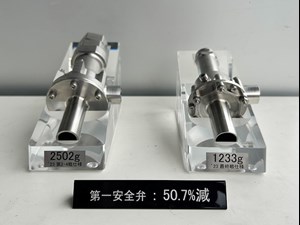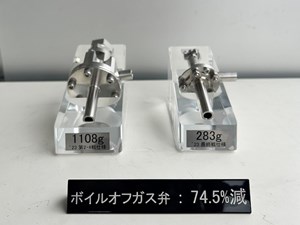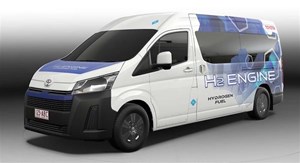News
H2-powered Corolla to participate in the Super Taikyu Series 2023 final round
Toyota Motor Corporation announced that it will enter the ENEOS Super Taikyu Series 2023 Supported by Bridgestone Round 7 Super Taikyu Final Fuji 4 Hours Race with Fuji Niq Festival, to be held from November 11 to 12, with the #32 ORC ROOKIE GR Corolla H2 Concept, which runs on liquid H2, and the #28 ORC ROOKIE GR86 CNF Concept running on carbon-neutral fuel.
The evolution and challenges taken on by the H2-powered Corolla
The liquid H2-powered Corolla, which first competed in the 24 Hours Race in May, has evolved even further in the three months since the Round 4 Super Taikyu Race at Autopolis in July. We will continue to make improvements and strive for further evolution in the 2024 season by agilely refining vehicles and people through making ever-better motorsports-bred cars.
Engine performance. Liquid H2 pumps must generate high fuel pressure with stability to achieve high output. We have improved the pressure boosting performance and durability of the pumps, which have been challenges, to achieve the same level of output as gasoline and gaseous H2 engines.
Cruising range. The maximum number of laps that could be driven on a single H2 fill-up at the Fuji 24 Hours Race in May was 16. Now, we have made improvements such as better accuracy in determining H2 tank fullness, reducing the amount of boil-off gas by reducing the heat entering the tank, and optimizing fuel injection when the gas pedal is not fully depressed. As a result, we're aiming to achieve 20 laps per fill-up in this race.
Vehicle weight. The H2-powered Corolla is equipped with many features that prioritize safety and security first and foremost. We identified parts that could be made lighter using the knowledge we have gained from our driving experience while keeping this emphasis on safety and security and reduced their weight by adjusting factors such as thickness and number of parts. As a result, we were able to reduce the weight of the tank, safety and boil-off gas valves, roll cage, high-pressure H2 system parts, and other components to achieve a vehicle weight of 1,860 kg, 50 kg lighter than the 1,910 kg it weighed at the Autopolis race.
The challenge of CO2 capture technology. It is necessary to both reduce CO2 emissions from vehicles and plants and capture CO2 in the atmosphere in order to achieve carbon neutrality. We will now take on the challenge of capturing CO2 from the atmosphere through a trial initiative to install a CO2 capture device on the H2-powered Corolla's engine compartment that utilizes its large-volume air intake feature and the heat generated by combustion.
More specifically, a CO2 absorption device will be installed at the inlet to the air cleaner, and a CO2 separation device that uses heat from engine oil will be installed next to the air cleaner. The separated CO2 will be captured in a small tank filled with an absorbent. The equipment used to absorb, separate, and capture CO2 from the atmosphere will use filters coated with an absorbent developed by Kawasaki Heavy Industries, Ltd. that can release CO2 at lower temperatures than conventional absorbents, thereby increasing CO2 capture efficiency.
Starting on-road feasibility testing of the H2-powered HiAce in Australia
The purposeful passion and action to achieve a carbon-neutral society has now also spread overseas, and H2 engine technology has started taking on a new challenge. We have installed the H2 engine in a commercial HiAce to conduct on-road feasibility testing operated by operating companies on public roads in Australia. In doing so, we will hone the H2 engine technology we have continued to refine through participation in the Super Taikyu series even further toward practical application.
Until now, we have worked to refine H2 engine technology through the Super Taikyu series, including the durability to run in challenging environments, H2 combustion technology, control of abnormal combustion, and assurance of H2 safety.
In addition to training in a motorsport environment, we will also train the vehicle on public roads through this driving demonstration to develop its practicality for commercial use, operability, and durability under the customer's operating environment, which will lead to its practical use in the future.
Toyota will continue to accelerate development by refining cars and people in the challenging world of motorsports. It will also continue to work with its partners to increase options in order to create an even better carbon-neutral society.





